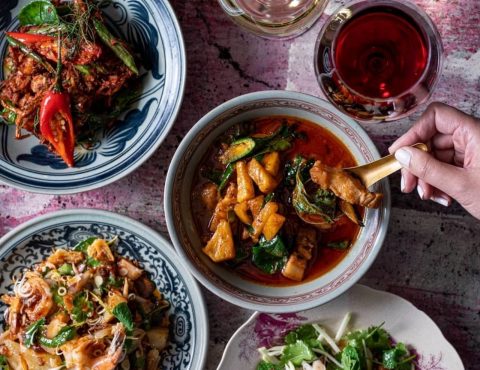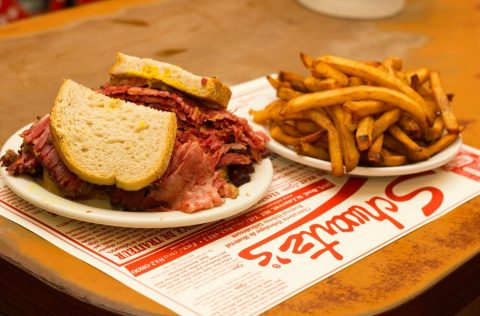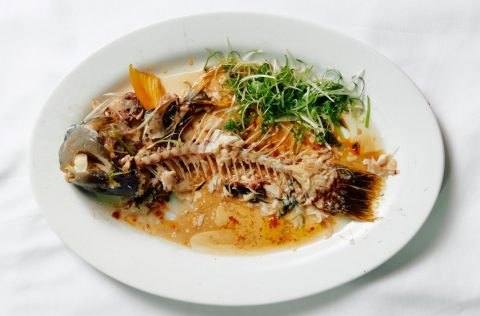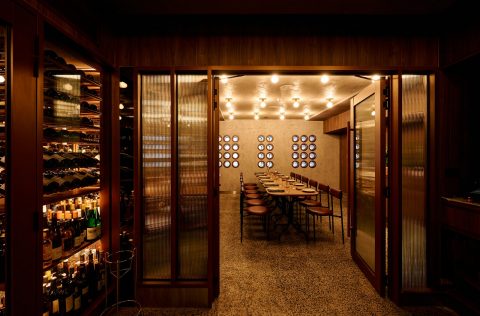The Community-connected Kitchens Making Dining About More Than Just Food
From writing menus based on what the locals supply to leasing land to farmers, these community-connected kitchens make dining out about more than just the food.
It’s Saturday afternoon at Barragunda Dining and an echidna snuffles through native grasses outside the floor-to-ceiling windows, as though parading for enchanted diners. Beyond the scrub and the spiky marsupial, a farmer walks along a row of brassicas, hat tipping towards a dipping sun.
We’re on the Mornington Peninsula, about an hour south-east of Melbourne (Naarm), on a coastal property with beef, sheep, orchards and – since February – a restaurant four years in the making. Clouds stream swiftly above but the air ripples gently at ground level, Cape Schanck’s wild winds held at bay by dense tea tree and banksia plantings. Inside, 40 diners sit at round timber tables eating vibrant dishes layered with today’s leaves, fermented goods from seasons past and surprising plant treasures that don’t often hit the plate: a cream made from sunflower stem, a sauce flavoured with leek tops, pickled green almonds.
Everything feels connected: the building in the landscape, the food to the seasons, the narrative of a restaurant doing things differently. Farm-to-plate is still a good story but Barragunda goes beyond that, creating a meaningful, mutually enriching web of connections. “I’m nothing without my community,” says executive chef and farmer Simone Watts. “Restaurant cooking used to mean sourcing the best, freshest, tastiest produce. Now I’ve realised it’s not just about me and my menu. We support the environment, biodiversity and farmers because everything depends on them.”
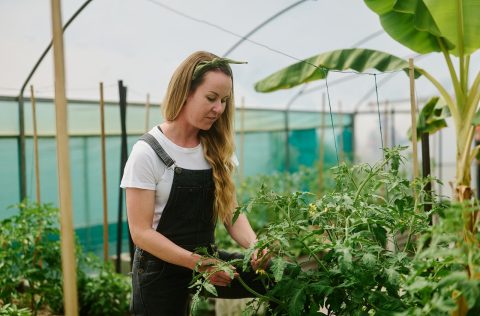
Barragunda Dining is on a farm owned by the Morris family, which made its fortune with Computershare in the 1990s and now runs a foundation that focuses on environmental projects. “This restaurant sprang from a strong sense of purpose,” says Morris Group director Hayley Morris. Using local food was a bedrock principle but it quickly became clear that aspiring farmers lacked affordable access to land. “We thought, well, we have land, why can’t they use it? Community was the natural outcome of our ethos.”
Enter chef-turned-farmer Karl Breese, who was unable to front up the $60,000 needed to lease commercial farmland in the region. Under the banner of Morning Penni Farm, he rents land at Barragunda for $2 per square metre, within sight of the restaurant, and with access to water, pipes, pumps, tractors and a coolroom. “Without something like this, I wouldn’t be able to farm,” he says. Breese sells to Barragunda Dining and to the broader community via the restaurant’s online store.
Community also drives Farmhouse Kedron in suburban Brisbane (Meanjin). The café is in an old lettuce storage shed, the remnant of a farm store that was acquired for road projects. “It’s the most unlikely location – you turn off a very busy road into our oasis,” says owner Amanda Scott. The café had strong support from the start. “People embraced us straight away and a lot of guests we have today were here in the first week.” They’re drinking seasonal smoothies – as mangoes finish, pineapples come in – and eating the signature breakfast gnocchi with bacon and poached egg.
Scott’s central community is her staff, who are celebrated in mini-profiles on the menu and are hired for attitude rather than skills. Even the least experienced are asked their opinions. “I am always learning from them,” she says. And the connections go even further. “Our landlord’s father brings Italian parsley, a lovely man up the road brought us white eggplant from his garden and I bring in lemons for customers to take home.” Farmhouse is just one café in a large city but Scott easily finds the meaning. “We give kids their first job, we are part of the rhythm of people’s lives. I couldn’t do it if it didn’t feel worthwhile.”
More community-minded places to try...
Image credit: Rhiannon Taylor
Pipit, NSW
1/8In Pottsville, north of Byron Bay, Pipit loves its suppliers so much that it shares them on a map so you can visit them, too. The restaurant’s closed-loop approach to produce has another layer, too: fish is on the menu (grilled, perhaps, and served with water spinach, silken eggplant and bone sauce) but chef and owner Ben Devlin also turns marine life into art. Using a Japanese printing method called gyotaku, squid ink is painted on the fish before rice paper is pressed onto the surface to create unique artworks. You can buy Devlin’s prints or sign up to his hands-on classes to make your own.
Image credit: Kabul Social
Kabul Social, NSW
2/8In an arcade leading to Sydney’s Wynyard Station is a little eatery run by female refugees from Afghanistan. Every meal purchased at Kabul Social leads to two meals being donated; one in Sydney, the other in Afghanistan. The cosy and convivial restaurant – try the flatbread with grilled chicken and green chilli chutney – is part of social entrepreneur Shaun Christie-David’s Plate it Forward ecosystem of venues that offer great food alongside community benefit.
Samesyn 2.0, Vic
3/8Most restaurants try to minimise waste but Samesyn goes much further. The intimate fine-diner in Torquay on Victoria’s Surf Coast doesn’t even have a general waste bin on site. Everything is made from scratch, much of it using rescued produce. There’s also a busy fermenting program and anything left over is composted. Even more impressive, the restaurant is run as a “profit for purpose”, donating all profits to Feed Me, a local charity that cooks and distributes meals to people experiencing food insecurity.
Image credit: All Things Equal
All Things Equal, Vic
4/8People with disability are often underemployed while many cafés are crying out for staff. All Things Equal bridges the gap by offering an all-abilities crew training and mentorship for award-based wages at a cheery cafe in Melbourne’s hip inner-southern suburb of Balaclava. Come for the good vibes, stay for the challah French toast with lemon curd.
Timbre, Tas
5/8If it’s growing abundantly in the Tamar Valley, it’s probably being served at indoor-outdoor winery restaurant Timbre in Legana, 15 minutes from Launceston. Chef Matt Adams has a “reverse” menu, starting with whatever locals bring in and turning it into daily-changing lunches and dinners: neighbour Stu supplies cucumbers, Anna and Beau deliver eggplants, Greg hands over beetroot. Others bring figs in season so maybe you’ll get fig leaf panna cotta with lemon verbena-soaked figs. Backyard growers are paid in dining vouchers.
Image credit: Duydash
Ondeen, SA
6/8Seasonal dining is the flagship experience at 1851 Adelaide Hills homestead Ondeen, but the expansive property is also a showcase for regional artisans, with a wine room offering guided tastings of local drops from indie producers. Culinary director Kane Pollard schools his team in crafts such as smoking, cheesemaking and vinegar brewing. Ingredients are valued from tip to root: corn kernels are turned into a “butter” to encase fish, which is then wrapped in the husks and cooked.
Image credit: Holy Grounds
Holy Grounds, WA
7/8In central Perth, this volunteer-run café takes coffee, community and cinnamon scrolls equally seriously. Designed as a gathering place to reduce isolation, there’s a knitting club (lessons and materials provided) and a communal jigsaw, with bike repairs and a book club in the pipeline. A welcoming attitude to dogs adds to warm and fuzzy feelings, and pet treats are available.



